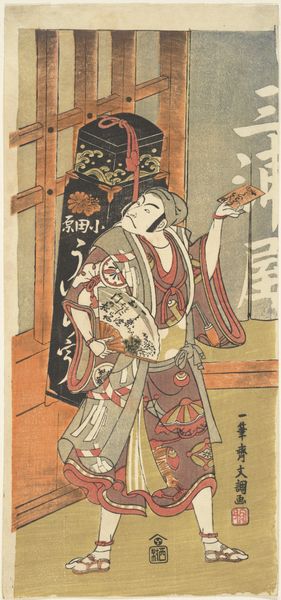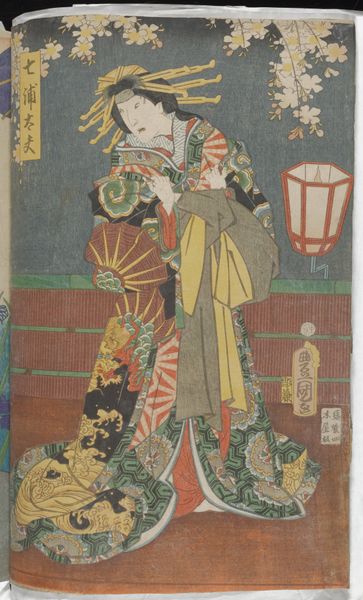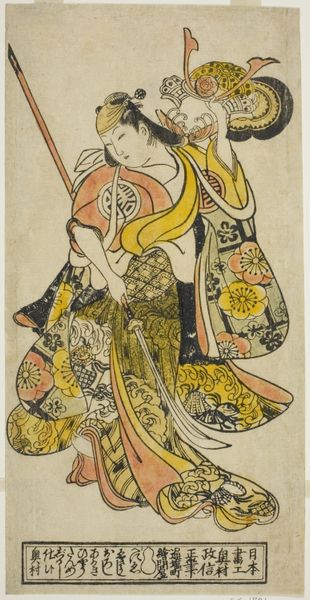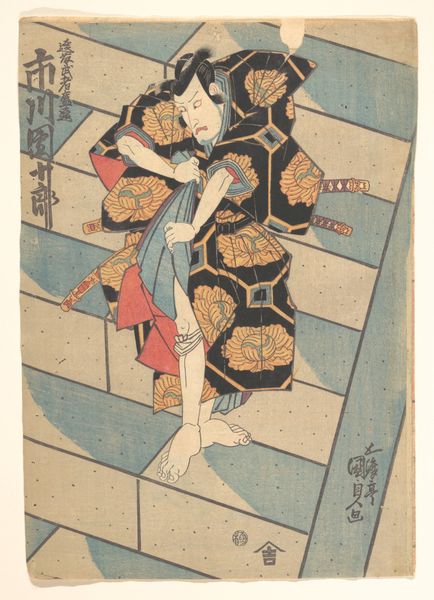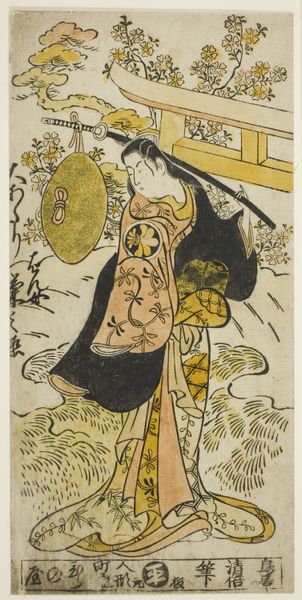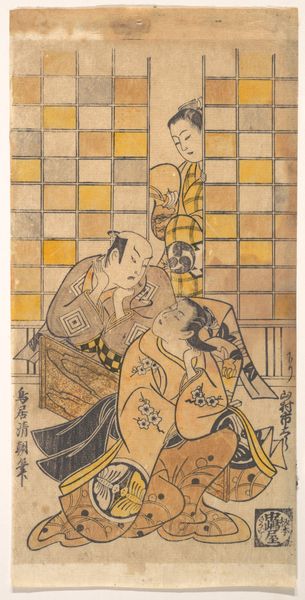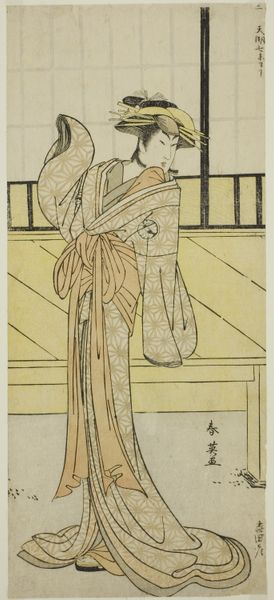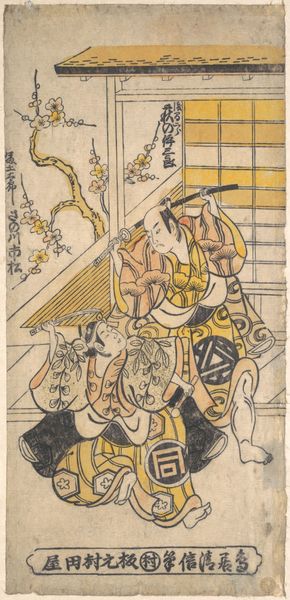
The Actor Ichimura Uzaemon VIII 1699–1762 as a Woman with Parasol 1696 - 1716
0:00
0:00
print, woodblock-print
# print
#
asian-art
#
ukiyo-e
#
figuration
#
woodblock-print
#
genre-painting
Dimensions: H. 12 1/8 in. (30.8 cm); W. 5 3/4 in. (14.6 cm)
Copyright: Public Domain
Curator: What immediately strikes me about this woodblock print is its delicate and intentional arrangement of forms. Editor: The piece feels airy, yet somehow posed and deliberate. Is that typical? Curator: Yes, I'd say so. We're looking at "The Actor Ichimura Uzaemon VIII, 1699–1762, as a Woman with Parasol," attributed to Torii Kiyomasu I and dating from around 1696 to 1716. It’s an example of Ukiyo-e, which translates to "pictures of the floating world." These prints were integral to Edo-period popular culture. Editor: The material craftsmanship here is really something. The gradations in the umbrella, that patterning of the kimono— how did the production line impact the work’s final outcome? Curator: These prints, despite their delicate appearance, were essentially a mass-produced art form. The process involved a collaboration between the artist, who designed the image, the block cutter, and the printer. Editor: So, divisions of labor became paramount, similar to the rise of manufacturing. Does this particular print embody broader themes about art’s accessibility for the rising middle class during this time? Curator: Absolutely. Ukiyo-e prints made art affordable, reaching a wider audience than traditional paintings. Subject matter focused on daily life—kabuki actors, courtesans, landscapes. Looking closer, the actor's elongated stance and slightly downward glance, coupled with the graphic lines defining the umbrella and window panes, construct a striking visual rhythm, guiding the viewer's eye throughout the composition. The limited color palette creates visual harmony as well. Editor: And these cultural icons were promoted throughout society at affordable prices, encouraging audience engagement. Now, the Metropolitan Museum of Art holds this one. Are the inks unique? Were certain plants employed in their manufacturing? Curator: The materials used in Ukiyo-e prints were organic pigments derived from plants and minerals, mixed with rice paste as a binder. Colors would depend on the availability of resources and prevailing taste, creating unique qualities for each design. Considering it once as advertisement posters opens doors into discussions on cultural significance beyond just aesthetic value. Editor: Well, that puts it all into a new perspective. It's hard not to admire both its form and socio-historical importance after a little unpacking. Curator: Exactly, that is part of its charm.
Comments
No comments
Be the first to comment and join the conversation on the ultimate creative platform.

